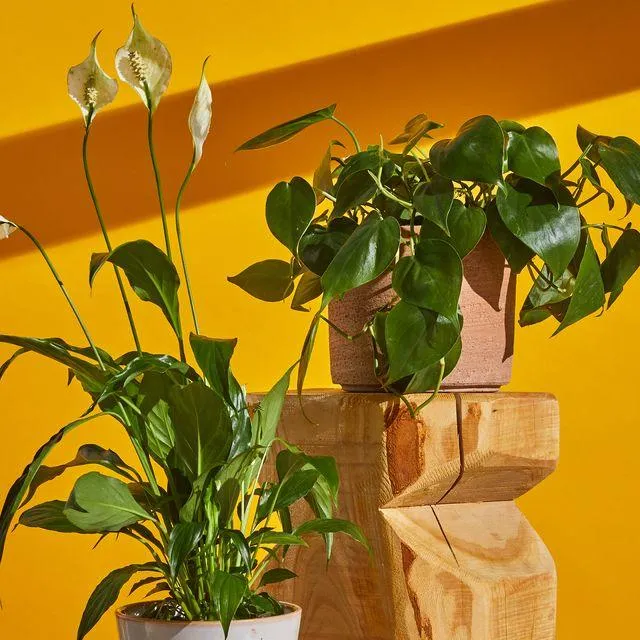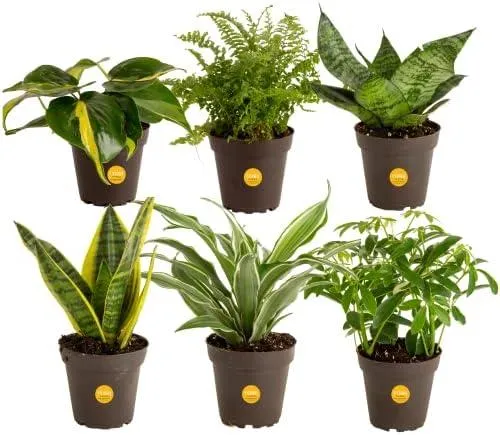The Best Indoor Trees for Your Home
If you’re looking to bring a touch of nature inside but don’t have outdoor space for a tree, indoor houseplants are a great option. From my experience living in small apartments over the years, houseplants can really boost the atmosphere and make a space feel more lively. In this article, I’ll cover some of the top tree varieties that thrive indoors as well as considerations for care so your new indoor tree friend will stick around for many years.
Ficus Tree
The ficus tree is one of the most popular and easy-to-grow indoor trees. It comes in many varieties but some great options for homes include the rubber tree and weeping fig. Ficus trees can grow several feet tall indoors if given sufficient light and care. They have glossy green leaves and an eye-catching trunk structure. As long as they receive bright, indirect light and regular watering, ficus trees are quite low maintenance.
While ficus trees can survive in low-light conditions, they will grow taller and fuller with more sunlight. South- or west-facing windows generally provide the best indoor light exposure. Allow the soil to dry out slightly between waterings but don’t let it fully dry out. Ficus trees may drop leaves if subjected to drastic changes in conditions, but new growth will often emerge. They make wonderful accent plants that can really fill out a room.
Chinese Evergreen
The Chinese evergreen, also called aglaonema, is another top choice for indoor trees. It features colorful, broad leaves in greens, reds, and oranges. Chinese evergreens tolerate low-light levels better than many other houseplants. They prefer humid conditions and should be misted occasionally. Allow the soil to dry out moderately between waterings. propagation is also very easy through leaf or stem cuttings.
These trees thriving in low-indirect sunlight can brighten up shady areas of your home. They are known to be very tolerant of neglect – perfect for anyone with a brown thumb! Chinese evergreens can grow into large, full plants several feet tall if provided with optimal care. Staking may be needed to prevent top-heavy growth from falling over.
Dwarf Umbrella Tree
If you don’t have room for a big tree but still want the look of one, consider the dwarf umbrella tree. As the name suggests, it has a compact growth structure. Individual plants only reach 2-3 feet tall but have a full, umbrella-shaped canopy. Leaves emerge palmate with 5-7 points that resemble umbrella spokes.
Dwarf umbrella trees require the same growing conditions as its larger schefflera relatives – medium to bright indirect light and evenly moist soil. They are quite hardy and withstand occasional dry spells well. Propagation is very easy through stem cuttings. Overall, these little umbrella trees make an awesome statement piece for small spaces with plenty of style in a compact size. They’re basically trouble-free!
Ponytail Palm
- Tall, columnar trunk with a rosette of fan-shaped leaves on top – looks more like a palm tree than other options on this list.
- Slow-growing to 4-6 feet tall indoors over many years with proper care. Very tidy and sculptural form.
- Tolerates low-light conditions near windows perfectly well. Allow soil to dry out between waterings but don’t let it crust over.
- Handles indoor temperatures well and dust easily wipes off leaves. Sort of plant that can be forgotten or ignored for weeks!
- Great choice for anyone intimidated by high-maintenance plants or looking for something unique that stays small-scale for years.
Ponytail palms prove that you don’t need a huge space or green thumb for an impressive indoor tree. Their low demands make them ideal for apartments or offices. They’re kind of awesome, basically!

Dwarf Date Palm
For a true palm tree look, opt for the dwarf date palm. Though small-sized at 5-6 feet maximum, it has the iconic feathery fronds and slender trunk of full-sized palms. This indoor tree thrives in medium to low light conditions near windows.
Allow the potting soil to dry slightly between waterings, being careful not to overwater. It may drop a few lower fronds as new growth emerges at the top annually. Minor tip pruning helps maintain its neat, full shape. Dwarf date palms make a real statement in small spaces and tolerate normal household conditions nicely. Just don’t overfeed it, as too much nitrogen can promote unstable soft growth.
If given adequate care, dwarf date palms can live for decades indoors. They prove that luxuriant tropical flair doesn’t require a Palm Springs oasis! With the right variety, even apartment dwellers can enjoy miniature palm trees.
How to Care for Indoor Trees
While specific watering and light needs vary between genera, here are some general tips for keeping indoor trees healthy:
Light:
Most houseplants thrive in medium to low light conditions near bright windows. Make bright filtered or dappled light is ideal. Avoid deep shade.
Watering:
Allow soil to dry out partially between waterings. Stick a finger in to check moisture level. Overwatering causes root rot.

Humidity:
Mist leaves occasionally and consider a pebble tray or humidifier. Place plants together for a group effect. Ideal houseplant humidity is 40-60%.
Fertilizer:
Use a diluted liquid houseplant food every 2-3 months during spring/summer. Too much can burn roots.
Pruning:
Trim off any dead or diseased parts. Shape and control size through selective removal of branches.
Pots:
Choose containers with good drainage. Repot slightly larger every 2-3 years or when rootbound.

Temperature:
Most houseplants prefer temperatures between 60-80°F. Avoid direct heating/cooling vents.
By following these basic indoor tree care tips, you can keep your new houseplant friend looking good for many years to come. Have fun picking the perfect variety and bringing nature inside! Does this help cover all your questions about choosing and caring for small indoor trees? Let me know if you need any clarification on the topics discussed.
Indoor Houseplant Selection Guide
| Plant | Light Needs | Water Needs | Size |
|---|---|---|---|
| Pothos | Low | Allow soil to dry between waterings | Small to Medium |
| Snake plant | Low | Let soil dry out between waterings | Medium to Large |
| ZZ plant | Low | Let soil dry out completely before watering | Small to Medium |
| Peace lily | Medium | Water when soil is dry to the touch | Small to Medium |
| Spider plant | Medium | Let soil dry out slightly before watering | Small to Medium |
FAQ
-
What kinds of trees are good for indoor growing?
Trees which don’t grow too tall basically, like the money tree or bamboo palm. Stuff that stays pretty small is best for inside a home.
-
How much light do indoor trees need?
Indoor trees generally need a lot of sunlight. Most require several hours of direct light each day by a sunny window. Having plants near a big window is ideal if you want em’ to thrive.
-
Do indoor trees need fertilizer?
Indoor trees don’t always need fertilizer. But it certainly helps em’ grow bigger and healthier if you do add it during the spring and summer. I use a diluted liquid plant food myself every couple months.
-
How often should indoor trees be watered?
Watering indoor trees kind of depends on their size and the conditions. But as a general rule, check the soil weekly. It should be kept damp but not soaked. Allow it to dry out partly between waterings.
-
How do you keep insects off indoor trees?
Insect problems seem to sometimes arise with indoor trees. Keeping the leaves clean is important. You can use a mild soap and water solution as a natural pesticide if bugs appear. Isolating any infested plants also helps stop the spread.

-
When should indoor trees be repotted?
Indoor trees typically need repotting every couple years, or when the roots start growing out the drainage holes. It’s best to repot in early spring before new growth starts. Make sure to use a container just 1-2 inches larger to avoid overpotting.
-
How do you prune an indoor tree?
Pruning indoor trees is basically the same as outdoor trees. Remove any dead or diseased growth. You can also shape the plant and pinch back new shoots to encourage bushiness. Sharp clean pruners are best. Be cautious of sap or irritating sap from some species though.
So in summary, trees that stay on the smaller side like the money tree are good choices for indoors. Provide bright light, occasional fertilizer and regular watering to keep em’ growing well. Repot as needed and prune to shape. With a little care most indoor trees will thrive surprisingly well inside the home.
